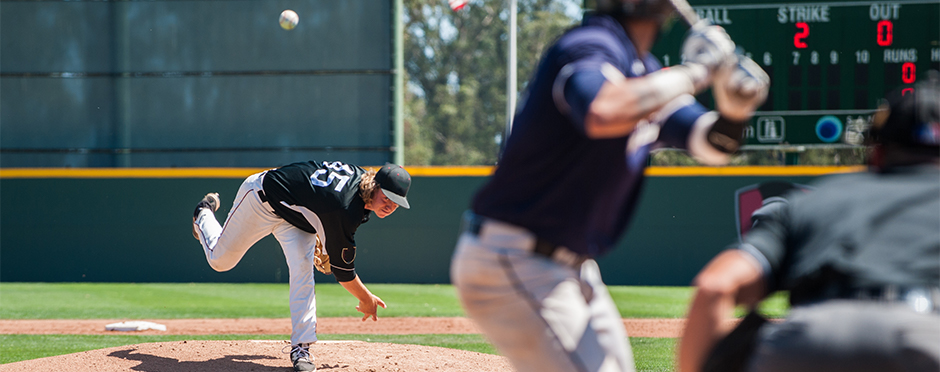
4 Performance Tips for Overhead Athletes
1 CommentTraining for overhead athletes oftentimes includes performing repetitive overhead activities in order to improve power and strength in their dominant extremity. However, this repetition can lead to overuse injuries, including rotator cuff injuries, labrum tears and ulnar collateral ligament (UCL) tears.
So, how do you become a good overhead athlete while minimizing the risk for overuse injury? Below are tips to improve performance, up your game and avoid injury!
1. Incorporate specific upper extremity strengthening.
It is important to isolate and strengthen the muscles that surround the shoulder and control shoulder movement. If these muscles are stronger, there is a decreased likelihood of injury and improved performance of overhead activities. These muscles and exercises include:
- Scapular muscles (shoulder blade muscles): middle and lower trapezius muscles control shoulder blade movement. To strengthen these muscles, try performing “Ts” and “Ys” on a therapy ball.
– To strengthen your middle trapezius: lie on a therapy ball between your chest and legs with your toes touching the floor. Start with your arms relaxed down by the side of the ball. Lift up your straight arms, with thumbs up, and squeeze your shoulder blades together. When you lift up your arms, it should create the letter “T” with your body.
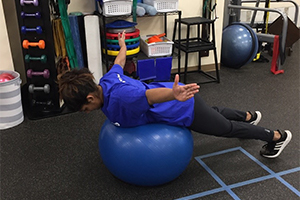
– To strengthen your lower trapezius: lie on a therapy ball with the ball between your chest and upper legs, and your toes touching the floor. Start with your arms overhead, so that your arms create a “Y” with your body. While keeping your arms straight and thumbs up, lift your arms up to pull together the lower part of your shoulder blades.
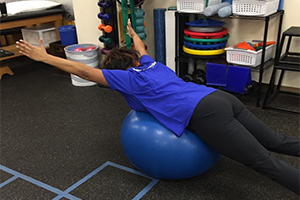
– The movements for both exercises will be small. Perform three sets of 10 repetitions of each exercise.
- Internal and external shoulder rotator muscles: these muscles will help with stability of the shoulder and performance of overhead motion. To perform these exercises, put a knotted resistance band at the top of a door with the knot behind the door hinge and close the door.
– Internal rotation: Hold the resistance band in your dominant hand and face away from the door. Your arm should be at shoulder height with your elbow at a 90-degree angle. While keeping your elbow bent, rotate your shoulder forward so that your forearm becomes parallel with the floor.
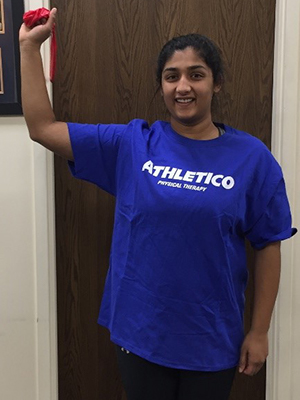
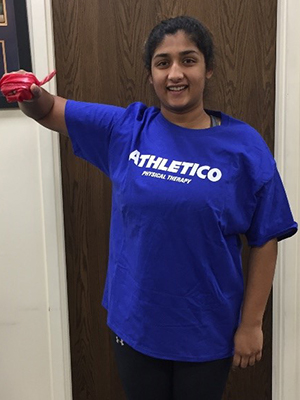
– External rotation: Hold the resistance band in your dominant hand and face toward the door. Your arm should be at shoulder height with your elbow at a 90-degree angle. While keeping your elbow bent, rotate your shoulder backward and bring your forearm toward the ceiling to make it perpendicular to the ground.
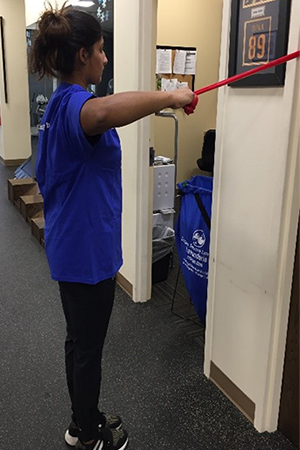
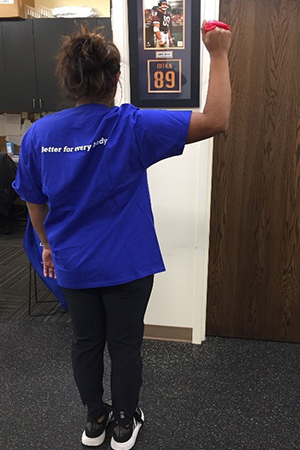
– Perform three sets of 10 repetitions of each exercise.
2. Incorporate core strengthening.
When throwing, more than 50 percent of the energy to the upper extremity is transferred from the core and the lower extremity muscles. This is why incorporating core strengthening into training can help improve overhead performance.1
- Forward planks: Lie on your stomach and push up onto your toes and elbows. It is important to keep your core contracted and your butt down. Perform three sets of 30 second holds.
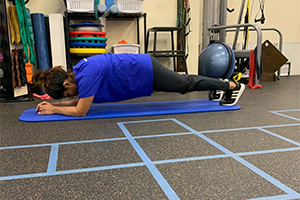
- Bird dog: Position yourself on your hands and knees. Contract your core while lifting and extending your opposite arm and leg. Hold up for about 2-3 seconds, then switch. It is important that your core stays engaged during the movement and that you avoid rotating your trunk when lifting.
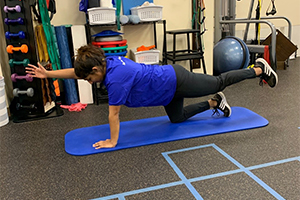
3. Get enough rest.
Many athletes who are performing at high levels do not take appropriate time off from training. It would be ideal for an athlete to take at least one week off every few months or even a month off when it is not a busy season. During this time, the athlete can train other muscles, such as performing more lower body work (read “Importance of Lower Extremity Strengthening for Overhead Athletes” for more information). It is good to change up routines to avoid overuse injuries.
4. Have your motion analyzed.
Schedule an appointment at Athletico for video throwing analysis. Our experts will analyze your throwing motion via slow-motion video analysis to enhance performance and minimize the risk of injury. There are many therapists at Athletico who have experience with overhead athletes and can help to identify potential deficits and what to do to help.
Keep Training
Try to incorporate these tips into your training in order to enhance your performance and reduce injury risk. If you have further questions or would like to work on individual deficits, contact an Athletico near you to set up a free assessment.
The Athletico blog is an educational resource written by Athletico employees. Athletico bloggers are licensed professionals who abide by the code of ethics outlined by their respective professional associations. The content published in blog posts represents the opinion of the individual author based on their expertise and experience. The content provided in this blog is for informational purposes only, does not constitute medical advice and should not be relied on for making personal health decisions.
References:
1. Zaremski JL, Wasser JG, Vincent HK. Mechanisms and Treatments for Shoulder Injuries in Overhead Throwing Athletes. Curr Sports Med Rep. 2017;16(3):179-188.

1 Comment
Rob S.
These are all great points to consider, but I agree, rest is probably the most important aspect. Without sufficient rest, even the best athletes will be unable to perform at the levels they’re expected, which ultimately results in less desirable results in play.